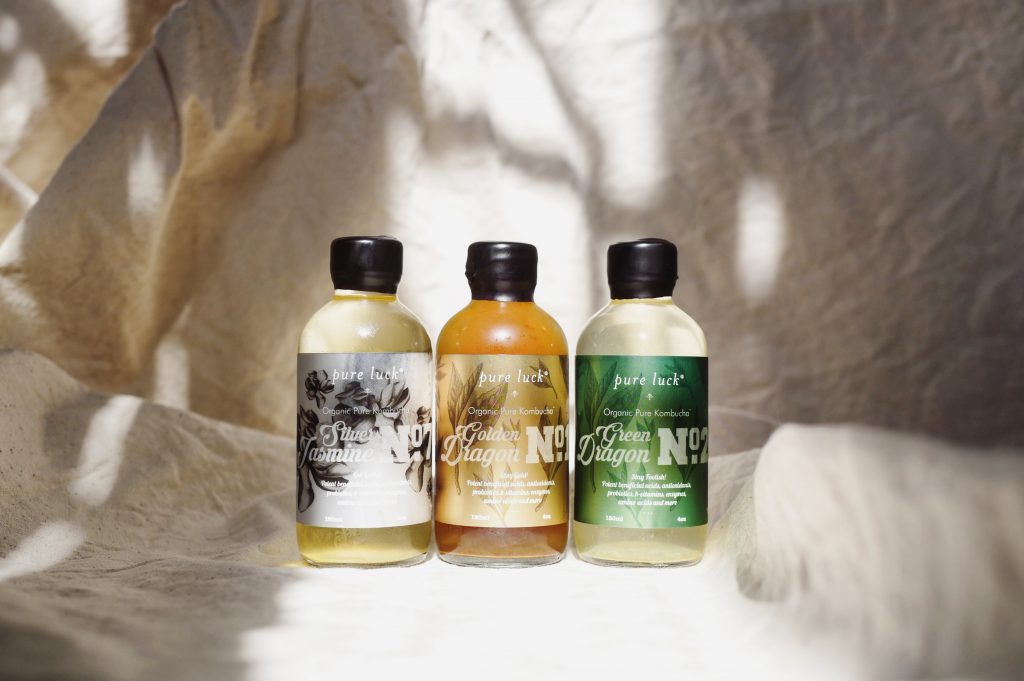What it is it about metal and kombucha anyway? It’s a complicated relationship.
Because of the acidic composition, kombucha will leach toxins from it’s container (metal or plastic). You avoid this with glass and lead free ceramic fermentors. Some question the science. We asked ourselves, why take the risk? Wood barrels are also a good option, they impart a specific flavor. We like glass because it’s best to control the flavor.
Prevention is the best medicine. Being informed is part of being healthy. Have you ever heard of using a wooden spoon with honey instead of metal? The reason is ionic!

Molecules behave in a way, that not only, cannot be seen with the naked eye, but also cannot be avoided, due to the laws of nature. Energy surrounds us. Two easy examples. Our heart generates a magnetic field and so does the Earth. What about when you rub your feet on the carpet and get static shock. You can’t remove energy from any space, not even in a vacuum. It’s omnipresent.
We asked ourselves, how do neutral water molecules and living organisms interact with each other, contained in an “electrified” space? Beer is alcoholic, so for real world anecdotes we looked to cheese. The first was – how cheese is affected by stainless steel vs. wood at a microbiotic level. We found Noella Marcellino, a woman some call the “cheese nun”. A Benedictine nun, who also holds a doctorate of microbiology. This was easy actual evidence to show the affect of stainless steel on bacteria. The stainless steel threw the balance of microbiota out of equilibrium. Allowing certain bacteria, like e-coli to thrive, while killing other helpful bacterias.
More research revealed studies showing how the stress levels of animals changed as a result of their enclosure. When enclosed by an electrified fence animals excreted more stress hormones than when a natural barrier was used. This in turn altered the flavor profile and hormonal content of the milk. Actually, the best cheese really does come from from the happiest, stress free animals!

How does stainless steel affect bacteria growth? Negatively, as an anti-biotic, creating a less diverse population of microbiota and therefore, less energetic outcome than could be achieved by using a sum neutral vessel, like glass, lead free ceramic or wood. What is the “ambient charge” of a steel fermentation vessel? If it’s been de-magnetized, a metal vessel can still collect ambient charge. Just like a person can collect “static cling” – or you can feel someones vibe. Using a metal fermentation vessel the kombucha brewer is unknowingly throwing out of balance, microbiota and energies of scale at an atomic level.
Say what?? Try this. Of all the vessels recovered from archeological sites worldwide. Have you ever seen a stainless steel artifact once? There’s a bureaucratic reason every kitchen is required to use NSF stainless steel in the modern age. It’s not because it is the best way always. It’s because it’s anti-biotic. With cultures, bacterias and tea we find that it’s always best to use natural materials like neutral glass, lead free ceramic or wood for quality, energy and taste retention. It just makes sense.
Wait, don’t most breweries use stainless steel, or plastic drums to ferment kombucha?
Yes, they do. This is the status quo of capitalism. It’s so much easier to make one batch thats 200 liters or more, than to make 10 batches of 20 liters. Think of all the time, work and space that saves (and money) having a few large fermentors than having 100s of small ones. Maybe we are gluttons for punishment, but we put your health and our quality ahead of profits. It’s just the way we do things at Pure Luck®.
